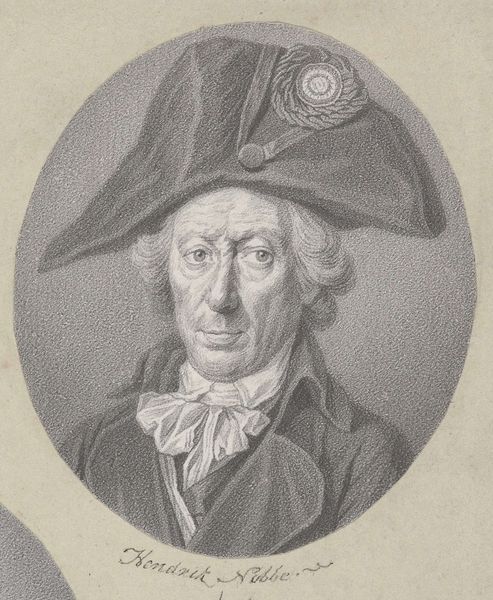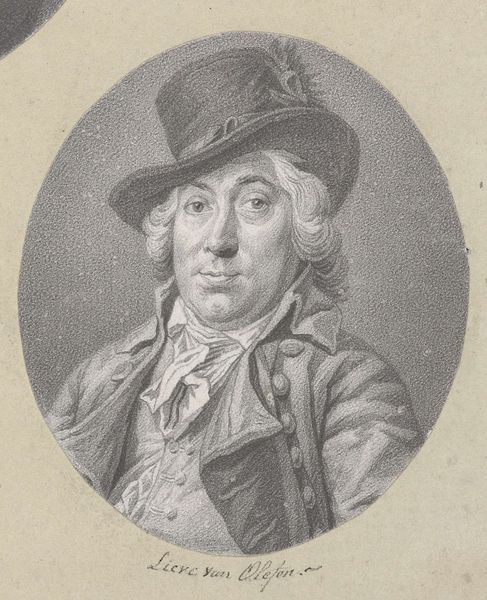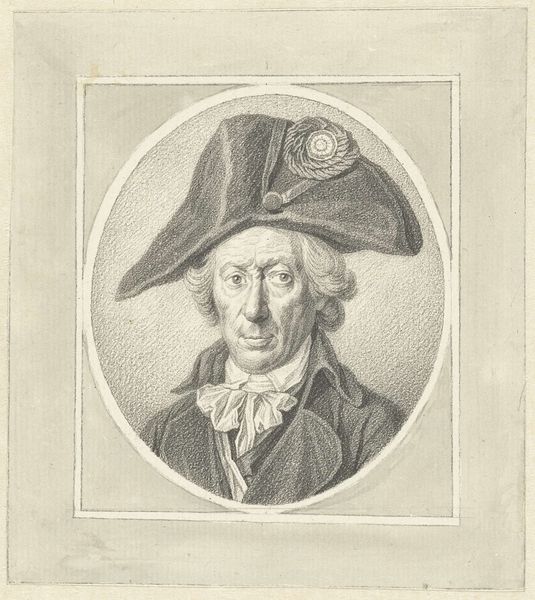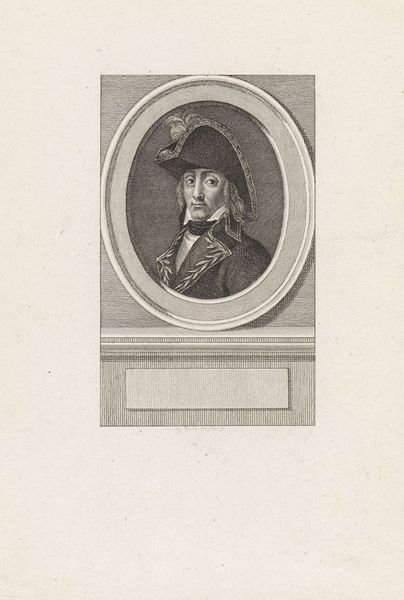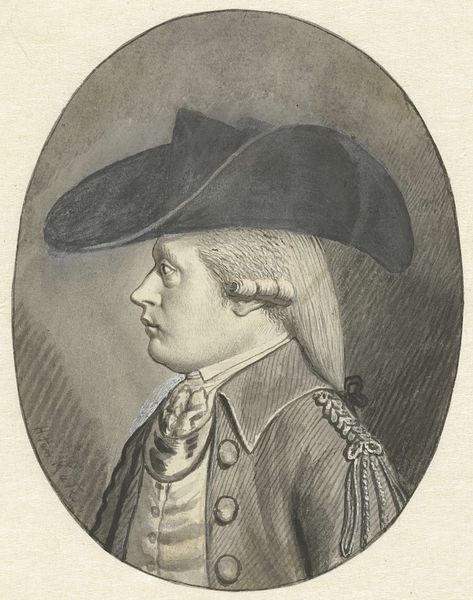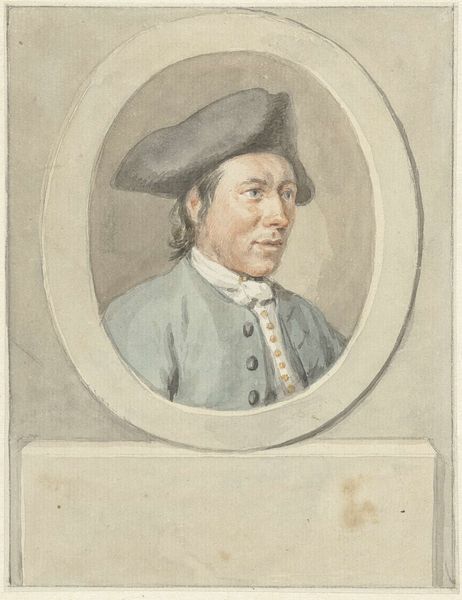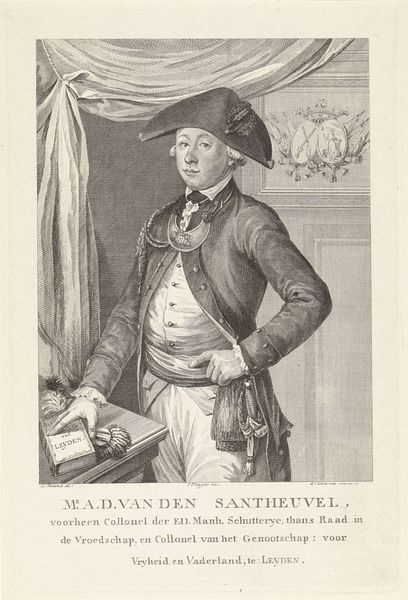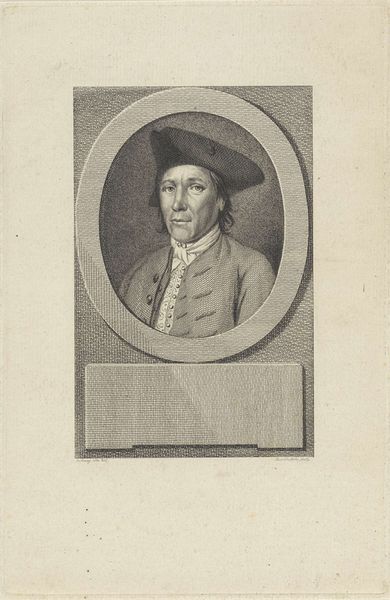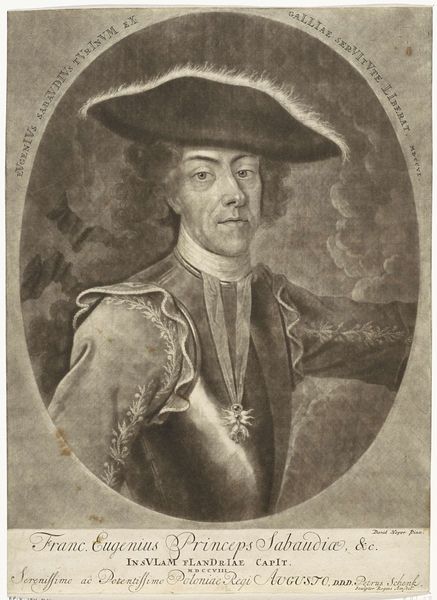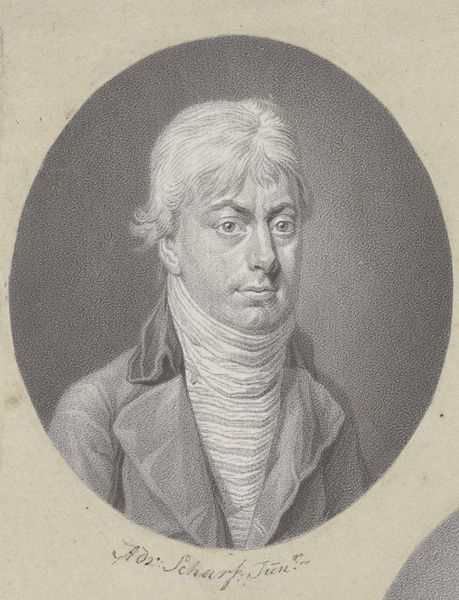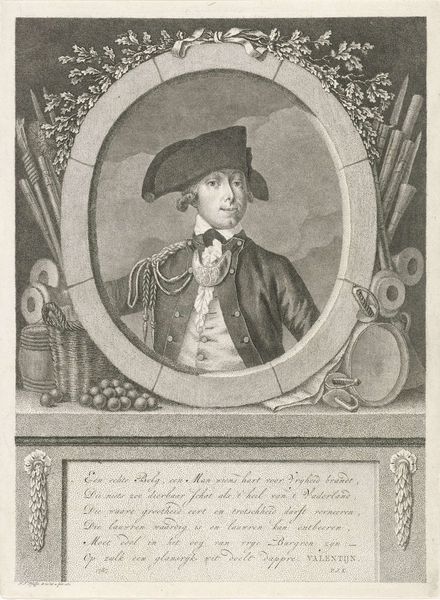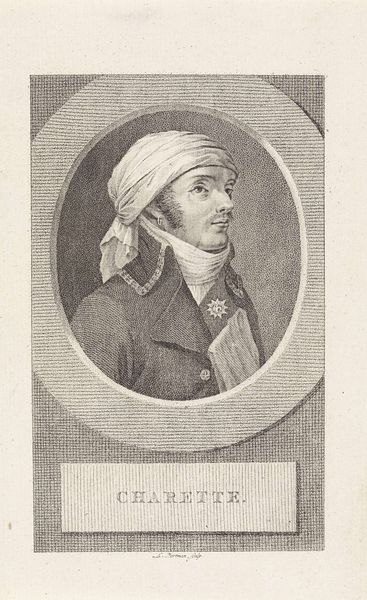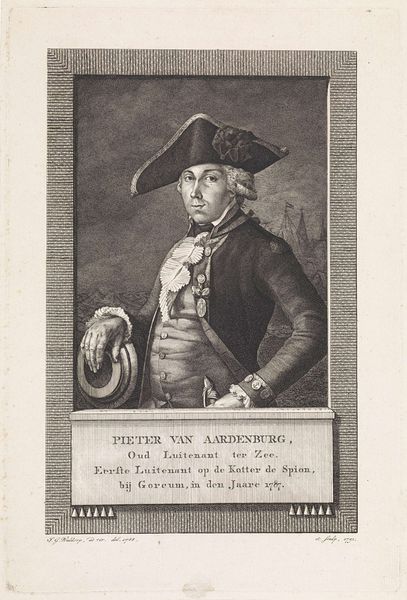
drawing, pencil
#
portrait
#
drawing
#
neoclacissism
#
charcoal drawing
#
pencil drawing
#
pencil
#
portrait drawing
#
portrait art
Dimensions: height 100 mm, width 85 mm
Copyright: Rijks Museum: Open Domain
Curator: Looking at "Portret van Van Houten," a pencil drawing created around 1797, I'm immediately struck by a certain severity. The cool gray tones and the tight, controlled lines create a reserved and perhaps even stoic mood. What’s your impression? Editor: There is indeed a captivating stillness in this portrait. This piece, by Johannes Cornelis Mertens, captures the essence of a society in transition, reflecting the shifting ideals of the era. Consider how neoclassical aesthetics influenced the portrayal of identity and status during this period. Curator: Exactly! The subject, Van Houten, is framed within this oval, his face rather austere. We should recognize how this drawing fits into the larger framework of Dutch portraiture. The late 18th century was a complex moment. We can read this piece as a statement of power, even resistance, through the conventions of representation. Editor: I concur. Van Houten's garb and bearing resonate with the political and social hierarchies of his time. But let's examine the tension here: this is neoclassical, yet the realistic portrayal of his features grounds it in a specific, palpable reality. How do we reconcile the ideal with the real, and what does this reveal about artistic aims? Curator: That push and pull makes the artwork compelling. Van Houten is rendered as a modern gentleman, ready to usher in a new century, yet his image is still tethered to a certain traditionalism. It is important to situate it in that historical discourse, seeing it as a node in larger narratives of Dutch identity formation and socio-political upheaval. Editor: A fine summary! His clothing suggests a certain rank and authority, but notice how the slight asymmetry of his face introduces an element of individuality that softens the potential for stiffness. And what of the implications of the neoclassical movement more broadly? What sort of cultural project was it advancing? Curator: Overall, reflecting on Mertens' "Portret van Van Houten," I appreciate how the piece encapsulates both individual and collective identity within a precise historical moment. It makes me consider, above all, art’s role as witness and active participant. Editor: Indeed, and it underlines art's potent ability to capture an era through subtle visual cues, raising complex questions about societal roles and expectations that stay with us, inviting continuous discussion and review.
Comments
No comments
Be the first to comment and join the conversation on the ultimate creative platform.
